- Home
- Graham Hancock
The Message of the Sphinx AKA Keeper of Genesis Page 15
The Message of the Sphinx AKA Keeper of Genesis Read online
Page 15
In the following chapters we will offer evidence to suggest that the extraordinary monuments of the Giza necropolis are part of a grand and long-forgotten scheme to initiate certain select individuals, the most recent of whom were the Pharaohs of Egypt, into an esoteric cosmic wisdom linking earth to heaven by means of which they sincerely expected to transcend the limits of death:
All the world which lies below has been set in order and filled with contents by the things which are placed above; for the things below have not the power to set in order the world above. The weaker mysteries must yield to the stronger; and the system of things on high is stronger than the things below.[278]
Thy protector is the Star-God ... thy soul passeth on ... thy body is equipped with power ... The doors of the hidden land are opened before thee ... Osiris, conqueror of millions of years, cometh unto thee ...[279]
Cosmic environment
The world view of the ancient Egyptians, which they appear to have inherited intact and fully formed at the very beginning of their historical civilization some 5000 years ago, was profoundly dualistic and cosmological. The foundation of Pharaonic theocracy, the unification of the ‘Two Lands’ of Upper and Lower Egypt into one kingdom, the notions that they had of their own past and ancestry, their laws and calendrical measures, the architecture of their temples and pyramid complexes, and even the land of Egypt itself and the Nile—all these were cosmological concepts to them. Indeed, they saw their cosmic environment (the sky, the Milky Way, the sun and the stars, the moon and the planets, and all their cycles) as being bound together in perfect duality with their earthly environment (their land and the Nile, their living king and his ancestors, and the cycles of the seasons and epochs).
We suspect that the history of ancient Egypt, to the extent that it was written down at all in papyri and tablets and inscriptions, was frequently expressed in a kind of ‘cosmic code’ ritualistically and symbolically linked—like the Pyramids themselves—to the ever-changing patterns of the sky. From this it follows that we must look to the sky, just as the Egyptians did, if we wish to understand the ideas that they were trying to communicate in their (on the face of things) extremely strange and problematic religious writings. These writings include mysterious and archaic texts aimed at guiding the afterlife journey of the deceased, such as the Book of the Dead (which the ancient Egyptians knew as Per-Ém-Hru, the Book of ‘Coming Forth By Day’), the Book of Two Ways, the Book of Gates, the Book of What is in the Duat and the Coffin Texts. Oldest and most enigmatic of all these funerary and rebirth documents however, are the so-called Pyramid Texts which began to be copied and compiled from older sources in the second half of the third millennium bc. These remarkable records have come down to us in the form of lavish hieroglyphic inscriptions on the tomb walls of a number of Fifth—and Sixth-Dynasty pyramids at Saqqara, some ten miles to the south of the Giza necropolis, and offer us a hitherto neglected key by means of which the secrets of the great Pyramids and the Sphinx can be unlocked.
Astronomical essence
All the above-named documents, and many more, have been translated into modern languages during the past hundred years, and all have been studied by scholars—the majority of whom would not dispute that they incorporate a complex network of astronomical references, symbols, allegories and allusions.[280] Only a handful of researchers, however, have considered the possibility that these astronomical characteristics could constitute the essence of the texts. In this group the late Giorgio de Santillana and Hertha von Dechend, whose study, Hamlet’s Mill, we encountered in Chapter 4, have commented on the manner in which the soul of the deceased Pharaoh was thought of as having travelled through the skies:
... well-equipped ... with his Pyramid Text or Coffin Text, which represented his indispensable timetable and contained the ordained addresses of every celestial individual he was expected to meet. The Pharaoh relied upon his particular text as the less distinguished dead relied upon his copy of chapters from the Book of the Dead, and he was prepared to change shape into the ... semblance of whatever celestial ‘station’ must be passed, and to recite the fitting formulae to overcome hostile beings ...[281]
Santillana and von Dechend also comment, somewhat witheringly, on the hopeless inadequacy of many of the translations that scholars work with today—translations which treat the astronomical aspects of the texts as though they are of no particular relevance:
So the elaborate instructions in the Book of the Dead, referring to the soul’s celestial voyage, translate into ‘mystical’ talk, and must be treated as holy mumbo jumbo. But then, modern translators believe so firmly in their own invention, according to which the underworld has to be looked for in the interior of our globe—instead of in the sky—that even 370 specific astronomical terms would not cause them to stumble.[282]
The problem identified here is, we will demonstrate, a large and multi-faceted one which has led scholarly analysis of the texts into a blind alley through a complete and conspicuous neglect of: (a) the most important religious concept of the ancient Egyptians; (b) the most vital feature of their land and sky and (c) the most fundamental element of their spiritual and cosmological beliefs.
Otherworld
In the earliest religious writings that have survived from ancient Egypt a powerful symbolic terminology is used to describe the cosmic ‘world of the dead’ and its features. This world is referred to as the Duat[283]—a concept that is routinely translated by modern Egyptologists as ‘the Underworld’ (or sometimes as the ‘Netherworld’).[284] In the Pyramid Texts, however, the Duat is clearly a location in the starry sky—as many distinguished Egyptologists of earlier generations such as Selim Hassan, Sir E. A. Wallis Budge and Kurt Sethe were undoubtedly aware.[285] Yet even these pioneers failed to get to grips with the full implications and characteristics of the concept because they lacked familiarity with astronomy.
For example, in his analysis of the various ways in which the word Duat was inscribed in hieroglyphic characters throughout the whole span of Egyptian history, Selim Hassan makes the following comment: ‘If we consider the evidence afforded by the meaning of its name during the Old Kingdom [the Pyramid Age], we shall see that the original Duat, the future Underworld, was localized in the sky.’[286] He then cites the view of Kurt Sethe that ‘the Duat could be either the red glow of twilight which precedes the dawn (i.e. the “false dawn”) or the spacious region in the east of the sky where this glow appears ...’[287]
Hassan goes on to quote from line 151 of the Pyramid Texts: ‘Orion has been enveloped by the Duat; while he who lives in the Horizon (i.e. Re [the sun-god]) purifies himself; Sothis [Sirius] has been enveloped by the Duat ... in the embrace of [their] father Atum.’
In Hassan’s opinion: ‘This clearly shows how, as the sun rises and purifies himself in the Horizon, the stars Orion and Sothis [Sirius], with whom the King is identified, are enveloped by the Duat. This is a true observation of nature, and it really appears as though the stars are swallowed up each morning in the increasing glow of the dawn. Perhaps the determinative of the word Duat, the star within a circle, illustrates the idea of this enveloping of the star. When on his way to join the stars, the dead king must first pass by (or through) the Duat which will serve to guide him in the right direction. Thus we see in Utterance 610 [of the Pyramid Texts]: “The Duat guides your feet to the Dwelling-place of Orion ... The Duat guides your hand to the Dwelling-place of Orion.” ...’[288]
Stars rising with the sun
Hassan’s assessment of the celestial landscape of the Duat is only accurate in as much as he realizes that it is in the east, that the moment of observation is the pre-dawn (which he calls ‘false dawn’, and that the constellation of Orion (Osiris), the star Sirius (Isis), the sun (Re), and some other cosmic feature representing ‘Atum’ (the ‘Father’ of the Gods), are all to be found in the Duat. Because he is not conversant with basic celestial mechanics, however, and because he fails to set the relevant lines from the Pyramid
Texts in the context of their time and their place, he then goes on to make a serious error of interpretation which has subsequently been compounded by numerous other astronomically illiterate scholars:
1. The time the Pyramid Texts were compiled was the epoch of 2800 bc to 2300 bc approximately.[289]
2. The place of observation of the sky was just south of modern Cairo in the so-called ‘Memphite necropolis’ (named after Men-nefer, later ‘Memphis’, the first historically recognized capital of ancient Egypt), where stand the great Pyramids of Giza (and also lesser Old Kingdom pyramids such as those at Abu Roash, Abusir, Saqqara, Dahshur and Meidum).[290]
3. The error that Hassan makes is his assumption that the stars in question—i.e. Orion and Sirius—are swallowed up ‘each morning’ in the ‘increasing glow of the dawn.’
34. The ‘Memphite necropolis’—Pyramid fields from Abu Roash to Dahshur.
35. Rising points of the sun at the solstices and equinoxes as observed from the Memphite necropolis. In the epoch of 2500 bc—the ‘Pyramid Age’—the Duat was observed and considered to be active only at the time of the summer solstice when the stars of Orion and Sirius rose heliacally (i.e. just ahead of the sun) at dawn.
In fact there is only one time of the year when this ‘swallowing-up’ occurs—a time that slowly alters down the epochs because of the earth’s precessional motion. The long and the short of it is that in the Pyramid Age the specific phenomena described in the texts, and addressed by Hassan (phenomena known technically as the ‘heliacal risings’ of Orion and Sirius, i.e. the risings of these stars just ahead of the sun at dawn) could only have been observed at around midsummer—i.e. at the summer solstice.[291] The Duat, in other words, was considered by the ancient Egyptians to be active only at the time of the summer solstice when Orion and Sirius rose heliacally and not, as Hassan suggests, throughout the year.
With these facts in mind, let us attempt to reinterpret the cosmic Duat, this time placing it in its proper astronomical context.
Cosmic river
One of the most salient features of the Duat, as it is described in the ancient Egyptian texts, is its relationship to a great cosmic ‘river’ called the ‘Winding Waterway’. Several studies have confirmed beyond any serious doubt that the ‘Winding Waterway’ was the magical band of light meandering across the sky that we know as the ‘Milky Way’.[292] It is also evident that the ancient priest-astronomers who compiled the Pyramid Texts identified the terrestrial counterpart of this ‘Winding Waterway’ in the sky as the River Nile and its yearly flood, the ‘Great Inundation’, which also happened to coincide with the summer solstice:[293]
The Winding Waterway is flooded, the Fields of Rushes are filled with water, and I am ferried over thereon to yonder eastern side of the Sky, the place where the gods fashioned me ... [Orion’s] sister is Sothis [Sirius] ...[294]
I have come to my waterways which are in the bank of the Flood of the Great Inundation, to the place of contentment ... which is in the Horizon ...[295]
May you lift me and raise me to the Winding Waterway, may you set me among the gods, the Imperishable stars ...[296]
As Sir E. A. Wallis Budge rightly observed: ‘the Egyptians ... from the earliest times ... depicted to themselves a material heaven [the Duat] ... on the banks of a Heavenly Nile, whereon they built cities.’[297] And similarly the philologist Raymond Faulkner, who translated the Pyramid Texts and much of the other religious literature of ancient Egypt into English, could not avoid making the obvious correlations between the ‘celestial river’, the ‘Winding Waterway’ and the Milky Way.[298]
Kingdom of Osiris in the sky
The stars of Orion and Sirius are located on the right bank of the Milky Way, which—at the summer solstice in the Pyramid Age—would have appeared as a vertical ‘cosmic river’ in the pre-dawn in the east.
To the ancient Egyptians, therefore, the Duat could not possibly have been seen merely as some vague, blank, rose-tinted region somewhere over the eastern horizon. On the contrary, it clearly had an extremely specific address in the sky—the ‘Dwelling Place’ of ‘Orion and Sirius’ on the banks of the ‘celestial Nile’:
Be firm O Osiris-King [Orion] on the underside of the sky with the Beautiful Star [Sirius] upon the bend of the Winding Waterway ...[299]
Betake yourself to the Waterway ... May a stairway to the Duat be set for you to the place where Orion is ...[300]
O King, you are this Great Star, the companion of Orion, who traverses the sky with Orion, who navigates [in] the Duat with Osiris ...’[301]
36. The sky region of the Duat with the stars of Orion and Sirius rising heliacally just ahead of the sun at dawn on the summer solstice. It was at this time of the year, and at this moment only, that the Duat was considered to be ‘active’. Note that the Milky Way at this same moment appeared as a vertical ‘cosmic river’ in the east. Also shown is the trajectory of the Orion stars after their dawn rising until their culmination at the meridian.
With this starry landscape in mind, we can begin to conjure up a fairly detailed image of the Duat, the ‘Kingdom of Osiris’ in the sky—a distinct pattern of stars, at a specific celestial location, that comes complete with its own ‘cosmic Nile’.
But when was this cosmic kingdom ‘founded’?
‘First Time’
In their most profound and beautiful religious texts, as we noted in Part I, the ancient Egyptians spoke of ‘the time of the gods’, Zep Tepi (literally the ‘First Time’) with the unshakeable conviction that there had indeed been such an epoch. In other words, they believed that Zep Tepi had been an actual, historical event. In line with their prevailing dualism they also believed that it had been projected and ‘recorded’ in the catalogue of the starry sky. Indeed it was a story that was re-enacted endlessly in the cosmic setting by the cyclical displays of the celestial orbs and the constellations.
What they had in mind, in other words, was a kind of cosmic ‘passion play’, expressed in the language of allegorical astronomy, in which each main character was identified with a specific celestial body. Re was the sun, Osiris was Orion, Isis was the star Sirius, Thoth was the moon—and so on and so forth. Nor was the drama only confined to the celestial realms; on the contrary, as one might expect in dualistic ancient Egypt, it was also re-enacted on the ground, amidst the cosmic ambiance of the astronomical Pyramids of Giza, where the events of the ‘First Time’ were commemorated for millennia in secret rituals and liturgies.[302]
Very little is known about these liturgies, or about the myths they expressed. As the Egyptologist R. T. Rundle Clark explains:
The creation of the myths was founded on certain principles. These are strange and, as yet, only partially understood. The most important element seems to have been as follows:
(a) The basic principles of life, nature and society were determined by the gods long ago, before the establishment of kingship. This epoch—Zep Tepi—‘the First Time’—stretched from the first stirring of the High God in the Primeval Waters to the settling of Horus upon the throne and the redemption of Osiris. All proper myths relate events or manifestations of this epoch.
(b) Anything whose existence or authority had to be justified or explained must be referred to the ‘First Time’. This was true for natural phenomena, rituals, royal insignia, the plans of temples, magical or medical formulae, the hieroglyphic system of writing, the calendar—the whole paraphernalia of the civilization ...[303]
Rundle Clark has also recognized that Egyptian art ‘is nearly all symbolism’, that ‘the architectural arrangements and decoration were a kind of mythical landscape’ worked down to the last detail, and that everything had a meaning:
The shrine [tomb or pyramid complex] of the god [the king], for instance, was the ‘Horizon’, the land of glorious light beyond the dawn horizon where the gods dwelt. The Temple was an image of the universe as it now existed and, at the same time, the land on which it stood was the Primeval Mound which arose from the water
s of the Primeval Ocean at Creation ... At the close of the daily temple service, the priests raised a small figure of Maat (the goddess of Law and Order) in front of the divine image. This act was meant to assert that Tightness and order had been re-established, but it was also a repetition of an event that took place at the beginning of the world ... of some mythical happening in the time of the gods ...[304]
Golden Age and the entry of evil

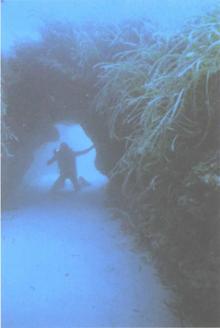 Underworld: The Mysterious Origins of Civilization
Underworld: The Mysterious Origins of Civilization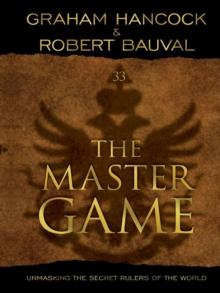 The Master Game: Unmasking the Secret Rulers of the World
The Master Game: Unmasking the Secret Rulers of the World America Before
America Before Entangled
Entangled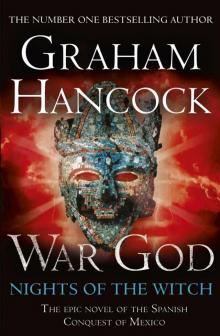 War God: Nights of the Witch
War God: Nights of the Witch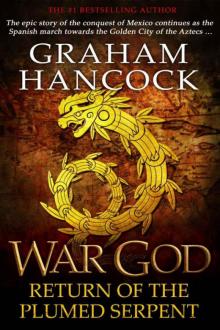 War God: Return of the Plumed Serpent
War God: Return of the Plumed Serpent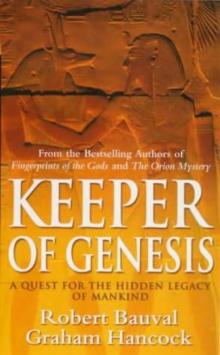 The Message of the Sphinx AKA Keeper of Genesis
The Message of the Sphinx AKA Keeper of Genesis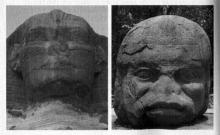 Fingerprints of the Gods
Fingerprints of the Gods The Sign and the Seal
The Sign and the Seal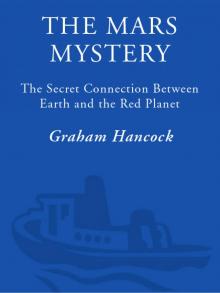 The Mars Mystery: The Secret Connection Between Earth and the Red Planet
The Mars Mystery: The Secret Connection Between Earth and the Red Planet Magicians of the Gods: The Forgotten Wisdom of Earth's Lost Civilization
Magicians of the Gods: The Forgotten Wisdom of Earth's Lost Civilization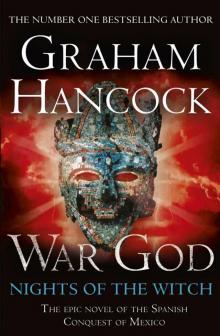 War God
War God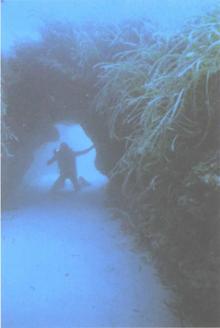 Underworld
Underworld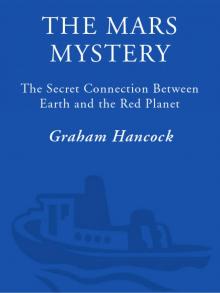 The Mars Mystery
The Mars Mystery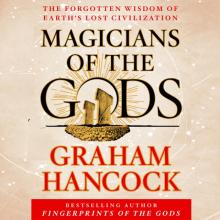 Magicians of the Gods
Magicians of the Gods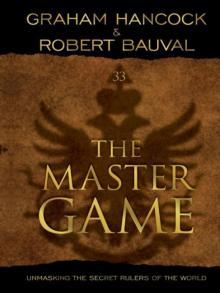 The Master Game
The Master Game